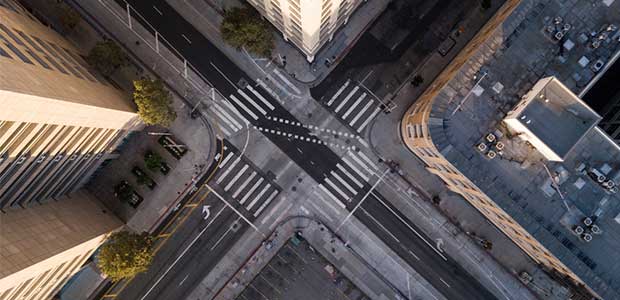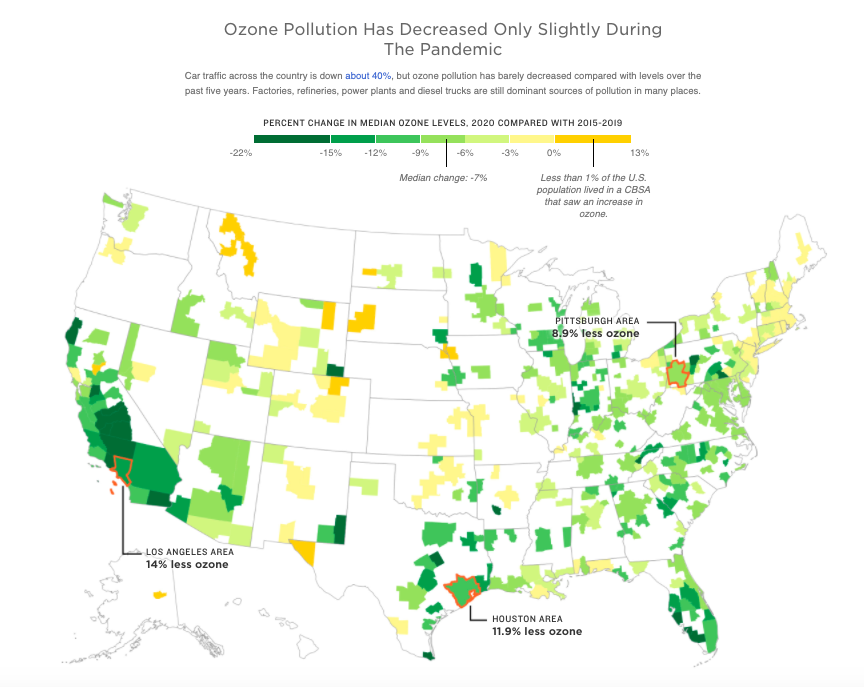
Coronavirus Has Decreased Air Pollution, but Cars Are not the Whole Pollution Picture
The pandemic has meant less car pollution, but not much of a decrease in overall pollution. Why? Because car pollution is just one player.
The coronavirus has had some good impacts on climate change and global warming—especially with a reduction in cars on the road and clearer air in many cities. However, global warming (and pollution) has always been a problem of many factors, and one NPR article explains that car exhaust is not often a city’s main or only source of pollution.
It’s clear many cities are breathing cleaner air, and pollution has declined—mostly on accident because of the coronavirus. This has meant a number of unexpected outcomes for the environment and people’s health—especially those with asthma or other respiratory problems.
While some cities are seeing decreases in air pollution with fewer cars on the road, many (or most) have been minimal decrease in air pollution—despite traffic reductions of more than 40 percent.
This is because ground-level ozone, or smog, occurs when the chemicals emitted by cars, trucks, factories and other sources react with sunlight and heat.
NPR analyzed over half a million air pollution measurements reported to the EPA from over 900 air monitoring sites around the country. Researchers compared the median ozone levels detected this spring (in 2020, during the pandemic) to levels during the comparable period over the past five years.
NPR researchers found that the “in vast majority of places, ozone pollution decreased by 15 percent or less, a clear indication that improving air quality will take much more than cleaning up tailpipes of passenger cars.”

Each city has a different situation. For example, much of Los Angeles’ poor air quality is thanks to vast fleets of trucks. In Houston, refineries and petrochemical plants are major contributors to air pollution. In Pittsburgh and many other parts along the east coast, pollution is largely because of the burning of coal.
What does this mean?
This means that tackling pollution in the United States is about much more than reducing car pollution. For one, the reduction of cars on the road during the pandemic was not intentional—there was a pandemic that required stay-at-home orders. Furthermore, many cities deal with poor air quality and a threat to the environment and their citizens from a combination of car pollution, truck exhaust, factory smog, coal burning and petrochemical plants.
This means in order to address air pollution, city leaders, business owners, and citizen will have to look at it from all sides and all sources—not just cars. This means looking at the ways cities generate power, manufacture goods and move these goods around.
What about the satellite images?
A New York Times article recently provided satellite images to show decreased pollution in populated areas like Paris and New York City. After California issued a stay-at-home order in mid-March, the Los Angeles, CA area saw the longest stretch of clean air that has been documented in decades.
But the cleaner air in LA, in particular, was not really about reduced traffic. A series of rainstorms swept through Southern California in March, which helped remove pollutants from the air. But as weather warmed up in April and May, the air quality worsened, even hitting the “very unhealthy” category from the EPA.
“As passenger cars have gotten cleaner, they’ve become a relatively smaller source of pollution. Heavy-duty transportation, such as trucks and buses, now accounts for the largest source of nitrogen oxides, which form ozone, in the area,” according to the NPR article.
And as cars get cleaner, and fewer cars are on the road during a pandemic, trucks dominate the Los Angeles roads. This is because trucks are largely responsible for the distribution of goods to stores.
But there’s another factor to the matter: nitrogen oxides. The NPR article describes this compound’s important like this: “Cars and trucks produce nitrogen oxides, also known as NOx. While that pollutant helps form ozone, under some conditions it can temporarily break down ozone molecules. So with less NOx being emitted recently, ozone hasn’t been suppressed as much.”
“Small reductions in NOx actually increase ozone,” says Cesunica Ivey, assistant professor of chemical and environmental engineering at the University of California, Riverside. “So we're just going to have to be more aggressive with our sustainable transportation solutions.”
California has seen a lot of effort to make cars more efficient—and increase the use of electric cars. Now, California is crafting a similar policy for trucks. State regulators are expected to vote on a policy in June that would require truck manufacturers to sell all-electric or fuel-cell trucks in the state—from delivery trucks to tractor-trailers. The policy would begin in 2024, requiring that 5 to 9 percent of sales be electric, depending on the type of truck. By 2035, it would be up to 40 to 75 percent of sales.
The pandemic—and its talks of its consequences on pollution—have sparked debates on the environment, and what the roles of industry leaders and business owners are. Yifang Zhu, professor at the Fielding School of Public Health at the University of California, Los Angeles, said:
“There is a sustainable way for a society to achieve a cleaner world in the future. We need to do more than we’re doing right now.”
What about other cities?
The city of Los Angeles and its reliance on truck traffic is just one example. For information on Pittsburg and its coal plants, or Houston and its petrochemical plants, check out the NPR article.
But while each city has a different situation, one truth is clear: the pandemic has had its impacts on the environment, but it cannot serve as the only air pollution solution. Cars or no cars on the road, the problem is always more complicated than it seems.